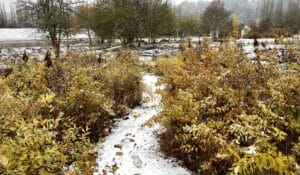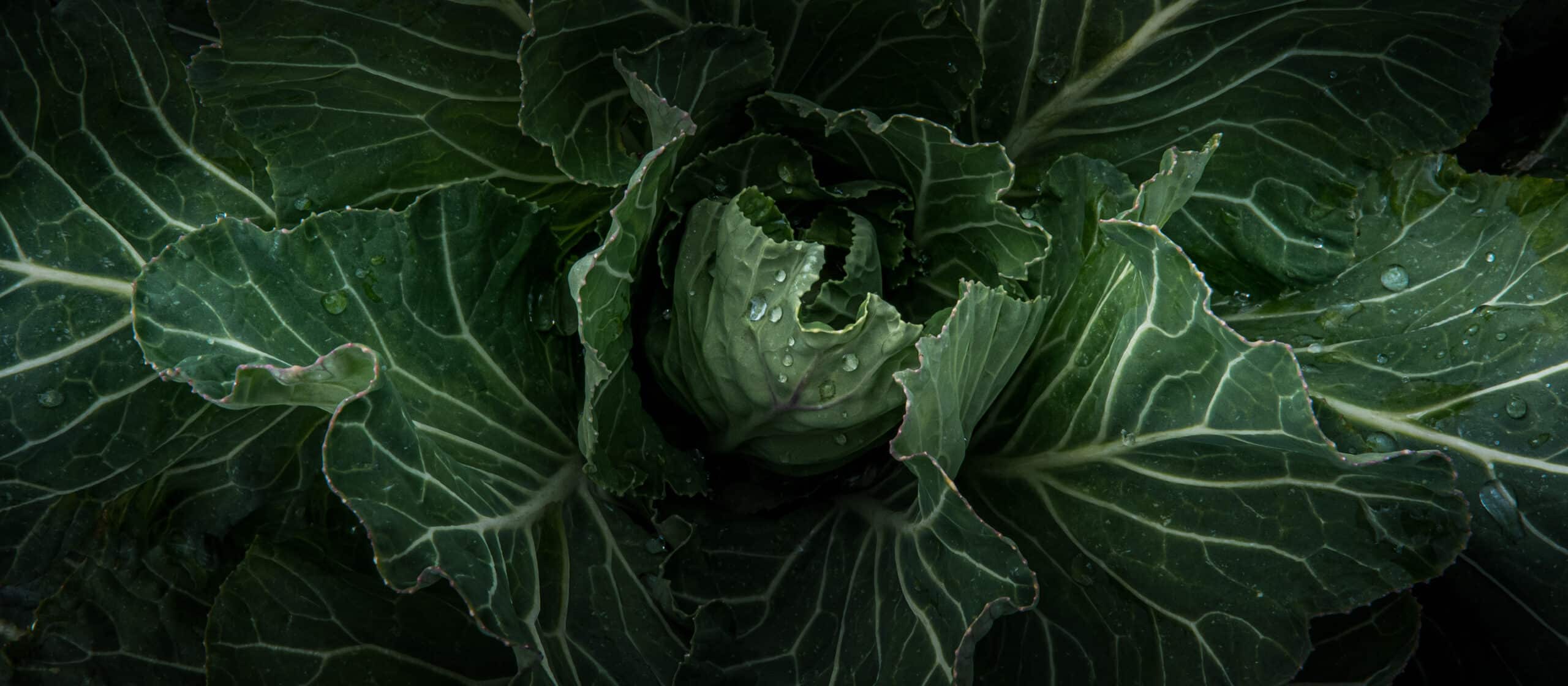
Regenerative Ag: A Primer
Regenerative Ag: A Primer
- posted on: October 5, 2021
- posted by: 21 Acres
"*" indicates required fields

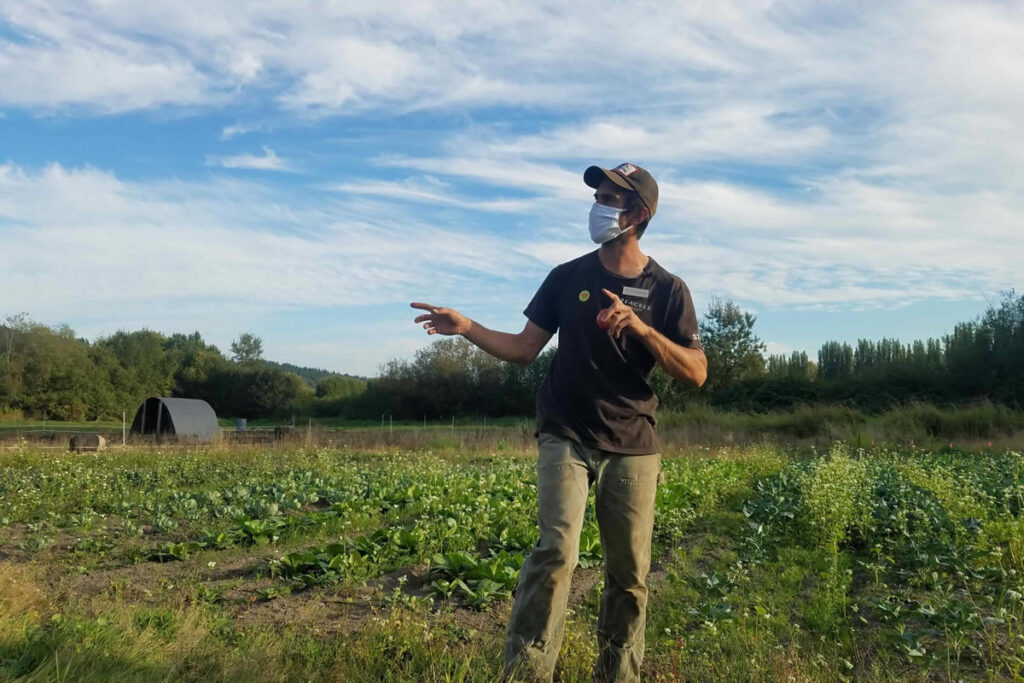
This article was written by Anthony Reyes, Farm Operations Lead.
Regenerative agriculture is the newest buzzword in conversations around agriculture and climate change, made even more popular by the recent documentary “Kiss the Ground.” But what is regenerative agriculture?
Regenerative agriculture refers to systems of agriculture working to draw down carbon and increase soil and water health, but there are many different understandings of this phrase.
Here’s how Regeneration International defines it:
…farming and grazing practices that, among other benefits, reverse climate change by rebuilding soil organic matter and restoring degraded soil biodiversity – resulting in both carbon drawdown and improving the water cycle.
Here’s how Regenerative Organic Alliance, the nonprofit that oversees Regenerative Organic Certification, defines it:
Regenerative organic farming practices support healthy soil, animals, and people to build resilient ecosystems and communities.
And here’s how the Rodale Institute defines it:
…a holistic approach to farming that encourages continuous innovation and improvement of environmental, social, and economic measures.
What do these definitions truly mean in practice?
One thing is certain: “Regenerative” means different things to different people. For us, regenerative practices move beyond concepts of sustainability and embrace generative philosophy applied to farming methods.
Regenerative and Degenerative Systems

Jack Algiere, Farm Director of Stone Barns and a preeminent thought leader in the farming sphere, said at an ag conference I attended years ago that in order to understand regenerative agriculture we must first interrogate what is generative and degenerative. From that framework, regenerative agriculture stands counter to degenerative forms of agriculture. By “degenerative,” I’m specifically referring to practices that degrade soil and water health, exploit labor, and extract more ecological and social resources than they replenish.
A growing group of farmers agree. A truly regenerative system works in direct opposition of degenerative practices and ideologies, interrogating how our food system operates systemically. This definition goes beyond healthy soil, animals, and environment. Even when farmers employ regenerative practices and work hard to steward their land, the systems farmers sell to are often riddled with degenerative and extractive principles.
For example, a truly regenerative system would:
- Work to dismantle oppressive systems;
- Explore distribution channels based on mutual aid rather than profit;
- Establish non-hierarchical operations;
- Value experience and wisdom as highly as understanding of western sciences
- Model an equitable social structure; and
- Prioritize people and the health of our environment and ecologies over monetary production and gains
All of these considerations are part of why when I talk about our regenerative farm, I prefer to say that we use regenerative agricultural practices. This refers to specific growing practices and strategies. While methods we use such as cover cropping, carbon drawdown, and composting are regenerative, my personal belief is that we all need to be part of the greater momentum to create systems together that are ecologically, socially, and economically regenerative.
Regenerative Practices at Work
So what are regenerative agricultural practices? These practices look at a farm from a soil health perspective. Here we often say that we’re growing soil—the byproduct happens to be great food. Increasing soil health is a farmer’s main tool of affecting climate change and leaving the environment and land around us healthier and more sustainable.
At 21 Acres, we are learning alongside the farming community about responsible practices that are beneficial for our farm and our environment. That means decreasing soil disturbance and establishing plans based on our specific geographic, geological, ecological, and climatic place.
For vegetable and flower farmers, we try to increase our soil organic carbon and use more water-efficient irrigation systems. Here are a few examples of regenerative practices:
Buffer zones and ecological restoration
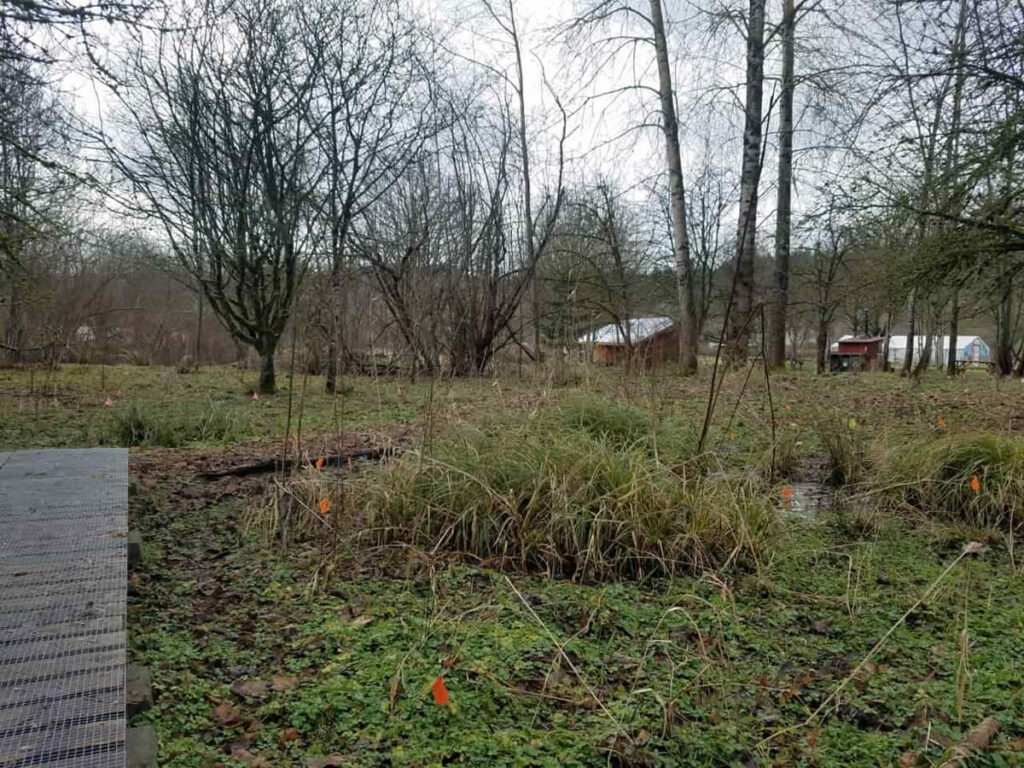
When looking at farms implementing regenerative practices in Washington state, I find myself asking some questions about our own methods. How integrated is our farm? Are we managing our buffer zones? Are we responsibly caring for our waterways? Do we provide ample habitat for vertebrate and invertebrate critters? These are extremely important considerations when thinking about long-term solutions to our current challenges.
Integrated management of our property is vital to our success, and also benefits neighboring farmers. In this way, restoration of adjacent land is just as important as crop production spaces. Here are a few ways that restoration helps local farms:
- Increases native habitat for wildlife and pollinators
- Protects waterways by creating buffer zones that can help cure water contamination
- Prevents habitat loss in the face of urban sprawl
Beyond just growing food (a crucial service in our community), a farmer’s primary responsibility is to steward the land. Incorporating wilderness corridors, buffers, and preserving ecosystems allows us to be resilient in a changing climate.
Cover cropping for soil organic carbon
On our farm, one of the most important ways we increase soil organic carbon is through our cover crop. We have strict regimens throughout the year that ensure there is always an area of the farm in cover crop. If you would like to know more about these practices, we recently launched a podcast on the topic. Also, this one-page resource makes it easy to begin to get a better understand of how cover crops are essential to regenerative farms.
In short, when we are thinking about carbon sequestration we are, to put it very simply, talking about the natural process of photosynthesis. If we’re able to increase the amount of carbon dioxide plants are able to pull out of the air, then upon decomposition, some of that carbon that was drawn out of the atmosphere turns to a more stable form of carbon held in the soil.
When looking at practices that increase soil organic carbon, we are looking at how much biomass can we grow and decompose. “Biomass” refers to the biotic mass of a plant, or how much and how big it grows, how much ground it covers, and, ultimately, its ability to control erosion, add soil organic matter, manage weeds, add soil organic carbon, and more. For the most part a cover crop with a high biomass will be more affective at increasing soil organic carbon and adding organic matter to the soil, mostly because of its greater potential to photosynthesize. For these reasons, increasing biomass through cover crop is an important factor on our farm.
Not all regenerative practices are equal…
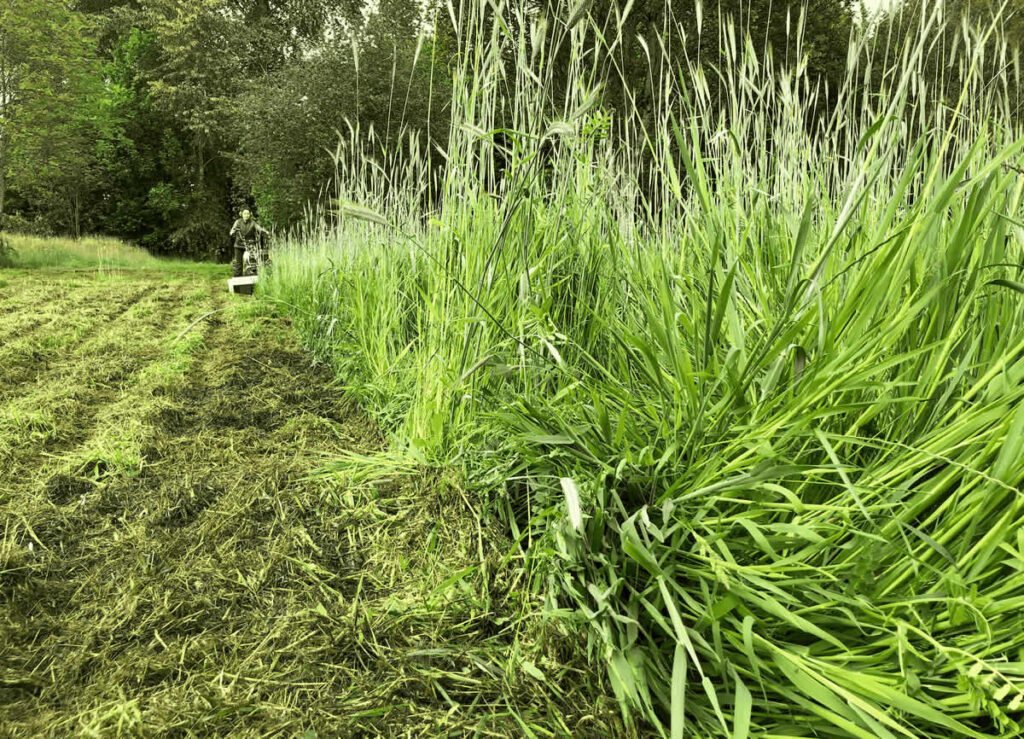
Despite what we’ve observed to be true at 21 Acres, a regenerative practice on one farm might not translate to another. One of the most important considerations in implementing practices is to understand your soil, your land, your environment, and to make decisions based on what is right for your specific situation. I’ve had the honor of watching how other farmers respond to observations and unique situations. Farmers are observers and adapters. Taking frequent soil samples helps tell a scientific story, but there is also important empirical and qualitative evidence farmers gather by noticing wildlife in the area and the presence of specific species.
We are facing challenging times ahead with the effects of climate change. We have a need to think critically and creatively about how we are going to address it. As farmers we play an important role in effecting change. At the same time, we need to be working on solutions to an overall extractive system.
As you delve into these conversations further, you may be hearing the word “agroecology.” I won’t go into detail here, as I wrote an article about the concept last year. In short, it is a more systems-based approach to our farm practices, especially as it’s become clear to more people that globally, peasant smallholders are critical to food production. It’s worth exploring if you are passionate about food justice and climate solutions.
One of the greatest challenges to food security and regenerative solutions is that there are currently far too few incentives for farmers to implement regenerative practices on farms. Often, shifting to regenerative methods can be time-consuming, expensive, and laborious. On a small property with a tiny profit margin, it can be risky to commit to practices without an immediate financial benefit. But in the long term, this can create a more resilient soil that will allow farmers to more easily combat the growing effects of climate change.
As consumers, one thing we can do to support regenerative practices is to purchase from local farmers and get to know how they grow food. Not all of us are certified, but you’ll never know for sure if that fresh carrot was grown regeneratively unless you get engaged and get to know your local farmers. If there is one thing farmers love doing, it’s talking about our farms.
Print this article: Regen Ag: A PrimerAbout Anthony Reyes
Anthony is a Chicano farmer, activist, and practitioner-student of agroecology who works as our Farm Operations Lead. He comes with over a decade of experience in crop production and sustainable agriculture. He most recently comes from Santa Cruz, CA where he managed the Homeless Garden Project farm. Prior to that, he was with Tilth Alliance managing, expanding production, and building farm-based curriculum for the two Seattle Youth Garden Works farm sites and the Rainier Beach Urban Farm and Wetlands. Anthony stays an active member of the WA sustainable farming community and when not on the farm you can find him trekking the beautiful PNW landscapes, playing bluegrass music, or working and consulting with local farms and food and agriculture justice nonprofits.
P.S. If you are ready to learn more, we’ve got a library full of resources on regenerative farming practices, including the Kiss the Ground book. Stop by our campus when we are open to pick up your next favorite read.










 back to blog overview
back to blog overview


